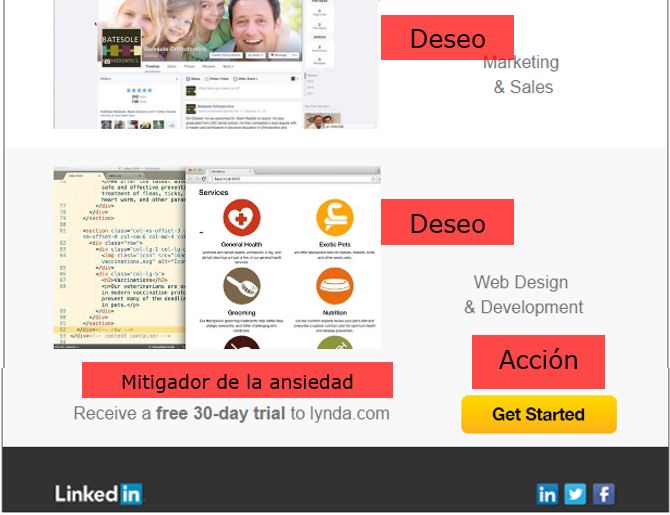The AIDA model applied to Email Marketing

The term AIDA (acronym for Attention - Interest - Desire - Action) describes the desired effects that an advertising message should produce in a person.
The fundamental idea behind the model is that there are unconscious stages in the consumer's mind when interacting with and interpreting the message. The stages are:
- Attention: it is the moment when something "eye-catching" catches the user's attention. In the context of the Email MarketingIn the first instance, this crucial moment is played out in the field of the inbox. Let's bear in mind that when you open your inbox, you are confronted with a sea of emails, so how do you make sure that it is your email that catches the user's attention? The key element is the subject line, which has to stand out from the rest. Some effective tactics to achieve this are: convey surprise, generate contrasts, be witty, trigger apprehension about the loss or scarcity of a good, etc...
- Interest: Once we have caught the user's attention, we will need a few seconds to awaken their interest. It can also be conveyed in the subject line, by mentioning the specific benefit or anticipating the benefits that will be obtained if they open and interact with the content of the email. Once opened, the centres that trigger the user's interest should be distributed, above all, in the upper third of the email (let's consider that the reading of an email is done sequentially from top to bottom). Interest can be aroused, fundamentally, if the content is relevant to the user. Relevant means that the user must recognise that the content is relevant to his or her desires, interests and concerns.
- Desire: the next objective is to induce the activation of the desire to acquire/interact/discover what is promised. To do this, we will have to communicate the concrete benefits that the user will obtain if he/she finally acts.
- Action: at this stage we must be able to to gather the "impulse" of desire and transform it into an action. Here, graphic and copy elements play a key role together with anxiety mitigators or incentives. From a copy point of view, we must bear in mind that there are expressions that can be interpreted as "demanding greater effort" and others "demanding less effort". The latter will be the most effective in the CTA. For example, "buy" is not the same as "get". In the former case, more effort is required and the user is likely to visualise having to register, select the item, enter their card number, etc., whereas in the latter, these elements of friction have disappeared.
In the following example we have located these elements in an email so that they can be displayed


